Key takeaways
- Grassroots engagement focuses on building authentic connections with voters, transforming passive supporters into active advocates through personal interactions.
- Local relationships and face-to-face conversations help uncover voter concerns, making the campaign’s message more relevant and strengthening support.
- Consistency and empowerment of local leaders are crucial for maintaining enthusiasm and sustaining momentum within grassroots campaigns.
- Campaigns should prioritize sustainable volunteer networks and integrate grassroots feedback to adapt their messaging effectively.
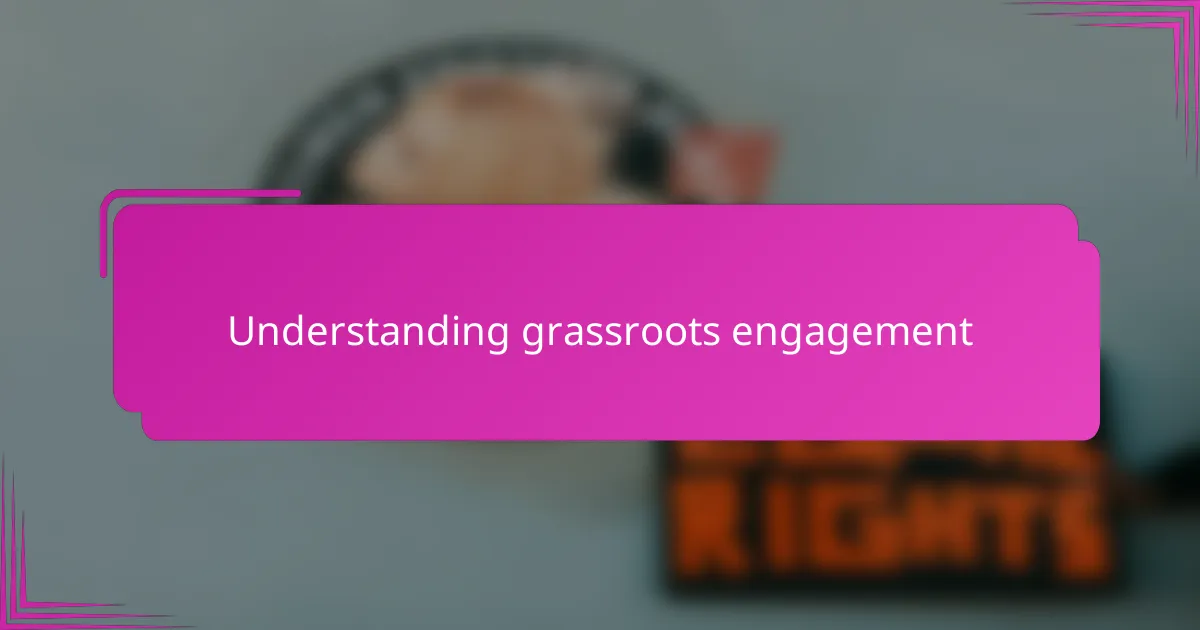
Understanding grassroots engagement
Grassroots engagement, to me, means connecting directly with everyday voters on issues that matter most to them. I’ve seen firsthand how authentic conversations at the neighborhood level can spark enthusiasm and commitment, far beyond what broad messaging achieves. Isn’t it surprising how a simple face-to-face chat can make someone feel truly heard and valued?
When I think about grassroots efforts in Republican campaigns, I recall times when volunteers knocking on doors shared their own stories, not just talking points. That personal touch builds trust and creates a sense of community that no fancy ad can replicate. It’s this human connection that turns passive supporters into active advocates.
What strikes me most is how grassroots engagement relies on patience and perseverance, qualities easily overlooked in our fast-paced political world. Have you ever stopped to consider that real change often starts with small, local interactions? I believe this foundation is what sustains the momentum of any successful campaign.
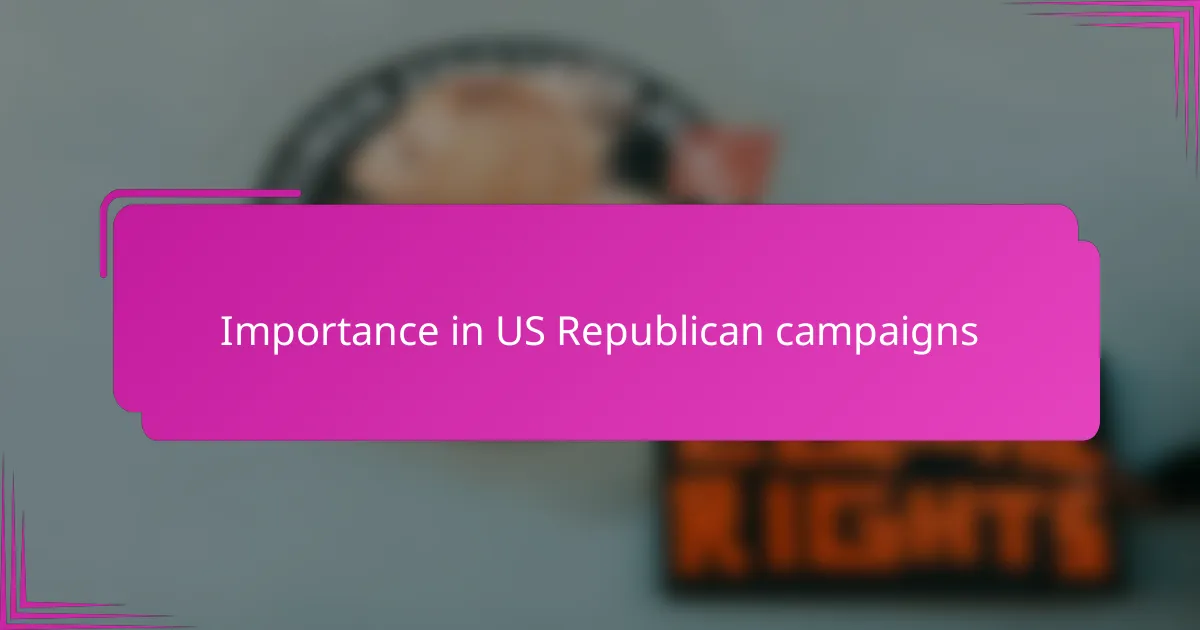
Importance in US Republican campaigns
In Republican campaigns, grassroots engagement isn’t just a tactic—it’s the lifeblood that keeps the movement grounded. I’ve noticed how local supporters become the campaign’s most passionate voices when they genuinely feel part of something bigger, not just a name on a ballot. Doesn’t that personal investment seem to energize efforts in a way mass media simply can’t?
From my experience, these face-to-face connections help uncover voter concerns that might otherwise go unnoticed. When a volunteer listens to a neighbor’s worries about taxes or education, it shapes the campaign’s message to feel more relevant and authentic. Isn’t it clear why Republican candidates who prioritize grassroots work tend to build stronger, more resilient support?
I’ve often reflected on how crucial it is for campaigns to nurture these local relationships, especially in tight races. Grassroots engagement creates a ripple effect—motivated supporters volunteer, donate, and persuade others, fueling momentum that paid ads can’t buy. Could it be that without this foundation, even the best-funded campaigns struggle to gain real traction?
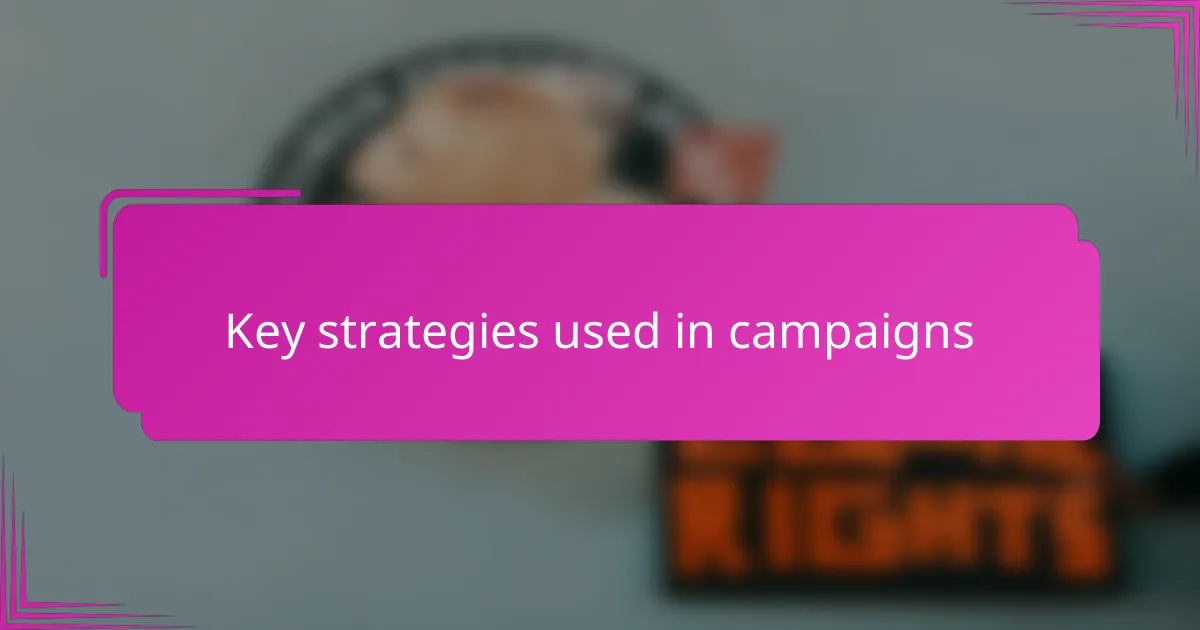
Key strategies used in campaigns
One key strategy I’ve witnessed in successful Republican campaigns is organizing small, focused gatherings where volunteers and voters can connect personally. These intimate settings encourage honest dialogue beyond scripted talking points, which I find crucial for building genuine trust. Have you ever noticed how people open up when they feel their voice truly matters?
Another tactic that stands out to me is the use of neighborhood canvassing combined with follow-up phone calls. This persistent approach shows voters that the campaign cares about their individual opinions, not just their votes. From my experience, that consistency often turns casual interest into committed support.
I also appreciate how some campaigns empower local leaders to take ownership of outreach efforts. Delegating responsibility builds a sense of accountability and pride at the grassroots level, which I believe multiplies enthusiasm exponentially. Isn’t it impressive how one motivated volunteer can inspire an entire community to rally behind a candidate?
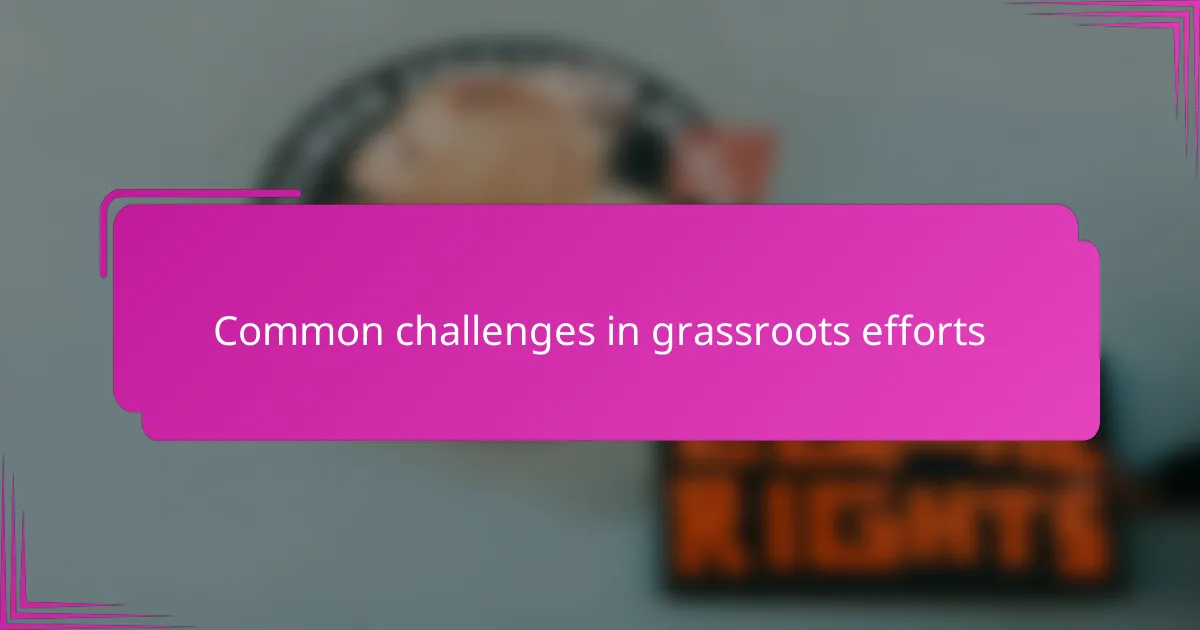
Common challenges in grassroots efforts
One challenge I often see in grassroots efforts is volunteer burnout. I remember a local campaign where enthusiasm was high at first, but over time, the energy waned as volunteers juggled busy lives with endless door-knocking. Have you ever wondered how campaigns keep that initial spark alive without wearing out their most passionate supporters?
Another hurdle is reaching skeptical voters who have been let down by politics before. From my experience, breaking through that wall requires genuine persistence and patience—something that’s easier said than done in a world obsessed with quick results. How many times have you had to listen carefully before someone’s guard finally dropped?
Logistics can also trip up grassroots campaigns more than people realize. Coordinating schedules, organizing materials, and communicating across diverse neighborhoods often feels like spinning plates. I’ve been in situations where a small misstep in planning meant missed opportunities to engage voters face-to-face—reminding me just how crucial attention to detail truly is.

My experience with grassroots tactics
I recall one campaign where I stood on a bustling street corner, handing out flyers and striking up spontaneous conversations with passersby. It wasn’t just about distributing information—it was about making genuine connections, listening intently, and responding authentically. Have you ever experienced how those brief moments can leave a lasting impression on both sides?
There was also a time when I helped coordinate a weekend canvass that seemed to drag on forever, yet the small victories—like a cautious voter agreeing to consider our message—felt deeply rewarding. That experience taught me that patience isn’t just a virtue; it’s the backbone of grassroots tactics. How often do we underestimate the power of persistence in politics?
On a more challenging note, I’ve witnessed how even the most passionate volunteers can face frustration when outreach doesn’t yield immediate results. I remember feeling deflated after a day of cold calls with little feedback, only to realize that planting seeds takes time. Isn’t it fascinating how staying committed amid setbacks often separates effective grassroots efforts from the rest?
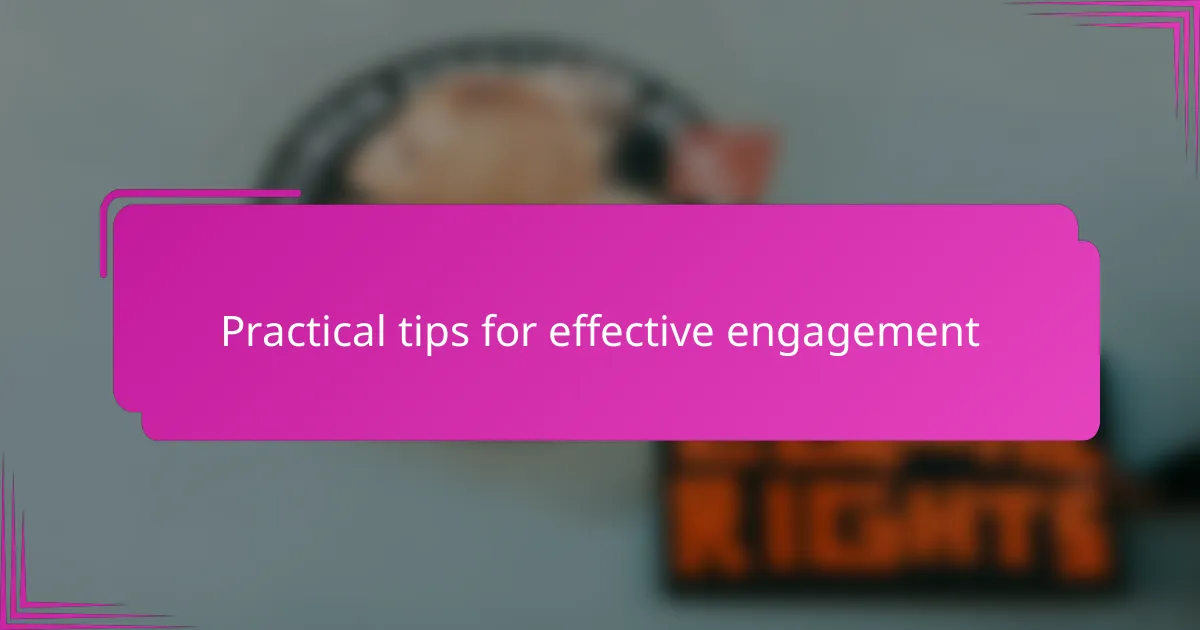
Practical tips for effective engagement
One practical tip I’ve found invaluable is to always keep the conversation personal and authentic. When volunteers share their own stories instead of reciting scripted lines, people can sense the sincerity, which opens doors to trust. Have you ever noticed how a genuine moment can break down barriers faster than any polished speech?
Consistency also matters immensely. I recall a campaign where repetitive follow-up calls after initial contact made all the difference—those voters knew we genuinely cared and weren’t just after their vote. Isn’t it amazing how simple persistence can transform lukewarm interest into real enthusiasm?
Lastly, empowering local leaders to spearhead outreach efforts creates momentum that few other tactics can match. When someone feels responsible for their community’s voice, their passion becomes contagious. From what I’ve seen, that shared ownership fuels a grassroots engine that no top-down directive can replicate. Wouldn’t you agree that motivation born from within always outlasts motivation imposed from outside?

Lessons learned for future campaigns
Reflecting on my experiences, one clear lesson is that future campaigns must prioritize building sustainable volunteer networks. I’ve witnessed how initial excitement can fade quickly if volunteers aren’t supported and acknowledged regularly. How often do campaigns plan for long-term volunteer care rather than just short bursts of activity?
Another important takeaway is the need to integrate grassroots feedback more systematically into campaign messaging. I recall a campaign that adapted its policy focus after listening carefully to community concerns, which immediately resonated with voters. Isn’t it powerful how tuning in closely to everyday voices can reshape a campaign’s direction for the better?
Finally, I’ve learned that patience and persistence remain essential but often underestimated. It’s tempting to chase quick wins, yet the most meaningful engagement grows slowly through consistent effort. Have you noticed how the smallest conversations, repeated over time, can build a movement that’s truly resilient?